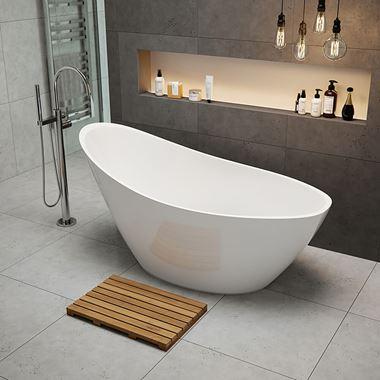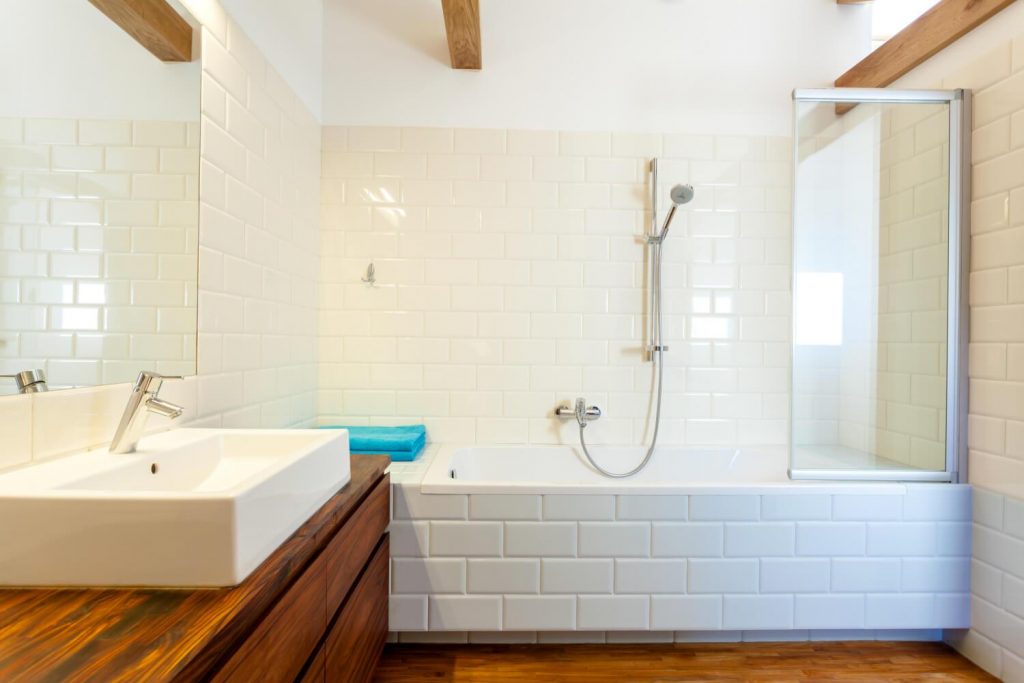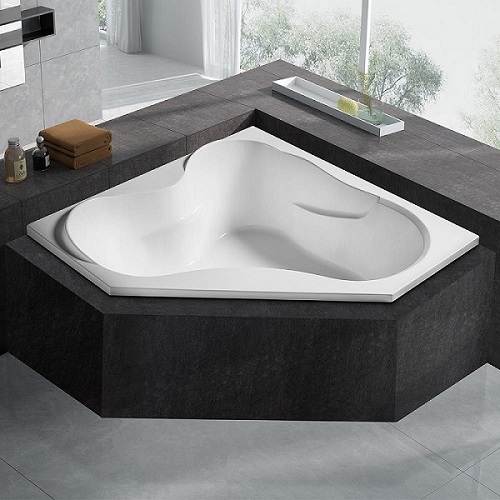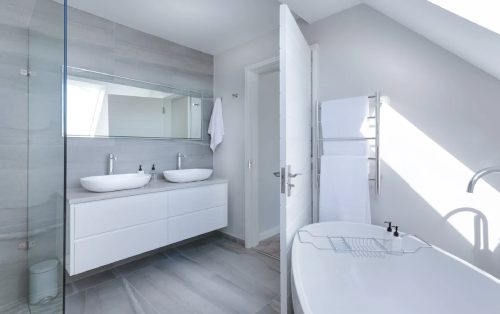In our bathtub buying guide, it is important to be aware of different bathtub materials bathtub types and other things to be considered. When it comes to bathtub material, there are a lot of options. But not all bathtubs are created equal. Some materials are more durable and long-lasting than others.
Five Common but Ideal Bathtub Materials
Here are five common and ideal bathtub materials you should consider for your next tub:
- Cast Polymer
This is made of a mixture of stone particles and resin. It can be molded into many different shapes and can be made to look like natural stones. Cast Polymer is an ideal material for tubs because it does not require sealing and does not crack. This type of tub is made from crushed stone mixed with resin and then molded into a bathtub shape. They are durable and can be made in many design styles making them customizable for any bathroom. They are usually more expensive upfront than other types of tubs, but they will last longer and are easier to maintain.
- Enameled Cast Iron
This is cast iron coated with porcelain enamel. It is very heavy, but it’s also very durable and easy to clean. For those looking for a heavy tub that retains heat well, enameled cast iron is an option. The enamel coating makes it resistant to stains and chipping, but be aware that it can still chip if your home has hard water or high mineral content in its water supply. This type of tub can be quite beautiful, with a variety of color options available in addition to the classic white.
- Fiberglass
This is a combination of resin and glass strands. It’s light and easy to install, but it’s not as durable as other materials. Fiberglass is a bathtub material made by combining glass fibers with resin and shaping them into the desired form. Fiberglass has moderate durability and can easily be resurfaced to extend its life when needed. It’s lightweight, easy to install, and inexpensive, but it can be damaged if you’re not careful with it.
- Acrylic
This is cast acrylic plastic reinforced with fiberglass. It is lightweight, strong, and easy to clean but is less durable than some other materials. Acrylic is a fairly common bathtub material. It is very lightweight and easy to clean. However, this material is also very durable and can last for as long as 20 years if properly maintained. Acrylic bathtubs are also easy to install, which helps reduce the overall cost of the product. Also, acrylic is considered the best bathtub material because of its characteristics.
- Porcelain Enameled Steel
This is steel coated with porcelain enamel. It’s lightweight, easy to install, and less expensive than some other materials, but it can chip or scratch easily if not cared for properly. While this is not a very common bathtub material, it has several advantages over more common materials. This material is lightweight, which makes the bathtub easy to install and reduces the overall cost of the product. Porcelain-enameled steel also comes in many colors and styles, allowing you to choose a style that fits your needs and budget.
Four Incredible Bathtub Types to Consider
In our bathtub buying guide, we will discuss the bathtub types you might consider purchasing. Here is the list:
1. Platform Bathtub

A platform bathtub is a bathtub that has been built into the floor. It’s like you’re stepping into a pool or fountain because there is no lip that you have to step inside of.
2. Stand Alone Bathtub

A stand-alone bathtub is a great option for those who don’t want to redo their bathroom flooring! This tub sits on your floor, which means you can install it without having to renovate your bathroom.
3. 2 in 1 Bathtub plus Shower

If you haven’t been able to decide between a shower and a bath, this is the tub for you! It’s both! Yes, really! This tub has an overhead shower and is also deep enough for you to lay down in it comfortably.
4. Corner Bathtub

A corner bathtub is one that goes in the corner of your bathroom and takes up less space than a tub normally would because it fits into the corner of your bathroom.
There are many different types of bathtubs in the market. But if your goal is just a basic understanding of how they function or which one would be best for a certain purpose, the four main types above are enough for you to make a formed decision when buying one.
Other Things to Consider Before Buying a Bathtub

Our bathtub buying guide is designed to help you make the best decision possible when it comes to purchasing a new bathtub. There are plenty of things to consider beyond what we’ve already discussed in our previous guides, so let’s get started!
- Size
What size bathtub will you want? Will you want a large tub that you can comfortably lay down in? Or would you prefer a more compact tub, like one meant for sitting up? Before making the decision, knowing the standard bathtub size would help a lot.
- Weight
How heavy is your new bathtub going to be? If the tub will be installed on the upper floor, the weight may be more of an issue than if it’s on the first floor. In addition, if the bathtub needs to be moved from one location to another on a regular basis, keep in mind that lighter tubs may be easier to transport.
- Price
Bathtubs can range from hundreds of dollars all the way up to the thousands. Before buying a bathtub, make sure that you have set aside enough money for your new purchase!
Thanks for taking the time to read our bathtub buying guide. We hope that it is helpful to you in your search for the right bathtub. Good luck and have a good day!
Frequently Asked Questions about Bathtub Buying Guide:
There is no definitive answer to this question as different materials have different benefits. However, some of the most popular materials used for bathtubs include acrylic, porcelain-enameled steel, and fiberglass.
Different people have different preferences. However, some of the most popular sizes for bathtubs include those that are large enough to comfortably lay down in and those that are more compact, like those meant for sitting up. The most common bathtub size is 60 inches long by 30 inches wide.
0 Comments for “Bathtub Buying Guide for Beginners: What to Look For Before Buying a Bathtub”